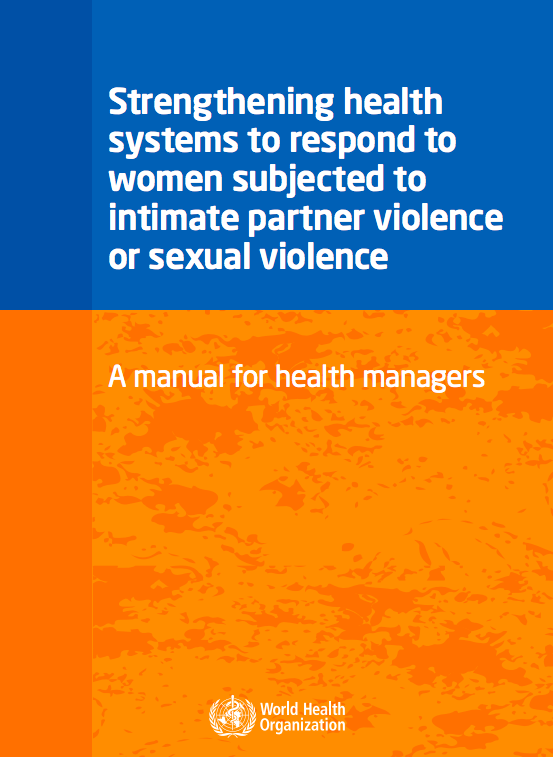Strengthening health systems to respond to women subjected to intimate partner violence or sexual violence. A manual for health managers
What is this manual?
The purpose of this manual is to strengthen and enable health systems to provide confidential, effective and women-centred services to survivors of violence. Violence damages women’s health in many ways, both immediate and long-term, both obvious and hidden. Such violence can include physical, sexual and psychological violence. The violence may be committed by an intimate partner or, in the case of sexual violence, by any perpetrator. The manual focuses on violence against women by men, in particular intimate partner violence and sexual assault, as it remains hidden and often unrecognized by the health system.
Violence leads many women to seek care from health services. Thus, the health system has a crucial opportunity and duty to respond to violence against women. These women need care and support and have the right to the best possible health-care available. This care needs to be available at every level of health-care delivery, from primary care to care in referral/tertiary hospitals. The health system can also be the point of entry to a network of supporting social and legal services.
Intended audience
This manual addresses primarily public sector health services, but it is also relevant for health services in the private sector, including services provided by nongovernmental organizations (NGOs). The intended users are health managers at all levels of the health system who have the responsibility for designing, planning or managing health services for women, including those who have been subjected to violence. This may include:
- Policy-makers – managers and other decision-makers in ministries of health and ministries in other sectors at the national and subnational levels (that is, provincial, state, district or municipal) who have responsibility for setting policies, developing protocols, designing programmes and planning and monitoring services.
- Health services managers at hospital or health facility level (that is, administrators) who have responsibility for facility level planning as well as day-to-day coordination and management of services.
- Health-care providers including doctors, nurses, midwives and allied professionals, especially those who have supervisory, mentoring and coordination roles.
- Decision-makers in funding agencies that support health services.
How to use this manual?
This manual recognizes that its users have various roles and responsibilities depending on their position and level in the health system or their place of work. Therefore, where content is relevant only for policy-makers or managers in national or subnational ministries, this is indicated with an icon “policy-maker”. Where content is only relevant for a local or health facility level manager, this is indicated with an icon “health services manager”. In all other places the content is relevant for all users.
While some readers may have specialist knowledge on integrating the response to violence against women into the health system, the primary intended readers are assumed not to be specialists in this topic. The guidance here will need to be adapted to the specific health system contexts and available resources, as well as the legal and policy frameworks in place in different countries. The first part of the manual assumes that the reader’s health system has little or no integrated response to violence against women. Readers in health systems that are more ready for a health response can skip to Parts 2, 3 and 4 as needed. Readers may access chapters that are most useful depending on their needs and the readiness of their health system to respond to violence against women.
Click here if you are interested in reading the manual.
